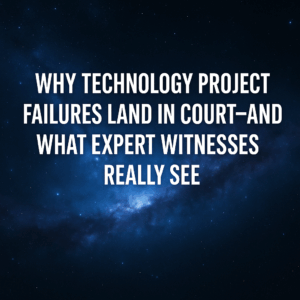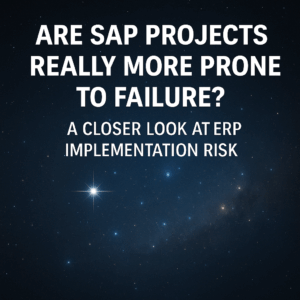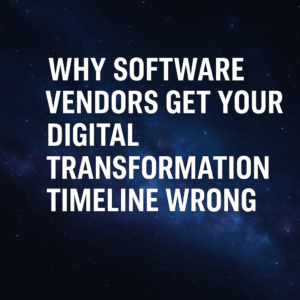The role of the Chief Information Officer (CIO) is considered one of the most sought-after professions in the technology industry. However, many CIOs face the risk of being fired. This raises the questions: why do CIOs get fired, and what steps can aspiring or current CIOs take to avoid such a situation?
![Learning from the Mistakes That Cost CIOs and IT Leaders Their Jobs [Career Advice] 1 YouTube player](https://i.ytimg.com/vi/cMDFGVVlgqo/maxresdefault.jpg)
One of the key individuals we work with at our client organizations is the CIO, who may also be referred to as the IT Director, Vice President of IT, or Chief Technology Officer. In this discussion, I will primarily use the term CIO to represent the leader of the IT group or one of the core leaders within it. Today, I will address the common reasons why IT leaders often face termination, the mistakes they make, and the pitfalls they encounter during their transformation efforts or day-to-day responsibilities. Throughout this video, you will notice a recurring theme: ignorance can lead to failure. Many times, CIOs are unaware of certain aspects or have blind spots that contribute to their downfall and eventual termination. Therefore, the focus today is on identifying strategies to avoid these risks and pitfalls as a CIO.
Table of Contents
ToggleNobody Got Fired for Hiring _________
One of the common early fatal mistakes made by CIOs during a digital transformation or leadership of a transformation initiative is the belief that “no one ever got fired by hiring [insert name here].” This mentality revolves around the assumption that selecting well-known software solutions like SAP, Oracle, or Microsoft guarantees success. It can also extend to choosing renowned consulting firms or system integrators such as Accenture, Deloitte, or KPMG. CIOs often perceive these choices as a safe bet, expecting that engaging these vendors or partners will safeguard their positions. However, numerous instances exist where individuals have indeed been fired despite opting for such prominent vendors.
It is crucial to recognize that the cachet, size, or name recognition of a software vendor or system integrator is largely irrelevant. From my perspective, there is no direct correlation between the level of success or failure and the size or established reputation of these vendors. Therefore, during the evaluation process, when determining the appropriate partners to work with, it is essential to look beyond name recognition and perceived quality. Instead, focus on identifying the vendor or partner that aligns best with the cultural and functional needs of your organization and the goals you aim to achieve.
Deferring Too Much to Vendors
Another common dynamic that often leads to failure among CIOs is an excessive reliance on outside software vendors and consulting partners. Frequently, CIOs, due to their blind spots or lack of complete confidence, defer to the advice and suggestions provided by software vendors or consultants. For instance, they may accept an unrealistic timeline proposed by the vendor, even though the vendor will not have to face the consequences or live with the results. Unfortunately, it is often the CIO who faces termination when things go wrong due to the inaccurate timeline.
Another common dynamic observed with CIOs is their inclination to embrace the sales pitch from software vendors without critical evaluation. They might wholeheartedly believe in buzzwords like “best practices,” the ease of cloud deployments, the benefits of low-code or no-code software, or the potential of automation through artificial intelligence. This unwavering belief often prevents them from adding a dose of reality and making the transformation plans realistic for their organizations. Consequently, these projects tend to fail, and many CIOs find their careers at risk. Therefore, it is crucial to approach vendor sales messaging with a skeptical mindset and to incorporate your own dose of reality. Ensure that your transformation aligns with the unique realities of your organization and the direction you aim to pursue.
![Learning from the Mistakes That Cost CIOs and IT Leaders Their Jobs [Career Advice] 2 YouTube player](https://i.ytimg.com/vi/injlyC-Sk3Y/maxresdefault.jpg)
Treating Transformations as Tech Projects
Another fatal mistake made by CIOs, as well as other executives within organizations, is treating digital transformations solely as technology projects. They become captivated by the technology itself, focusing on its bells and whistles and cool features, which is important but should not be the sole focus. What holds greater significance is having a clear understanding of the organization’s business needs and objectives, and how technology can help achieve them. This may involve making tough decisions such as cutting scope or disregarding certain technologies or advancements that are not relevant to the business.
Another mistake within this context is the lack of consideration given to the organizational and human dynamics of a transformation. CIOs sometimes assume that if technology works well from a technical perspective, it will automatically work for the business. However, this assumption may or may not hold true. The best CIOs I have worked with are actually those who possess limited technological knowledge but possess a deep understanding of operations and the business they work for. They recognize the value and importance of the human and organizational aspects of change. Given a choice, I would place my bet on a CIO who is strong in organizational and operational expertise, even if they are not as proficient in technology, rather than someone who is highly knowledgeable in technology but lacks focus on the operational and organizational dimensions.
Some of the most significant career failures I have witnessed among CIOs are attributed to an excessive focus on technology while neglecting the operational and human aspects of change.
Failing to Mitigate Business Mistakes
The final significant mistake commonly observed among CIOs is their failure to recognize and mitigate business risks during transformation initiatives. This issue ties back to the previous point I mentioned about the myopic focus on technology and the neglect of organizational, human, and operational aspects of change. However, this mistake is broader in scope, encompassing a failure to acknowledge project risks, understand their magnitude, and take necessary measures to mitigate them.
Allow me to provide an example. A few years ago, I worked with a CIO who was implementing Oracle ERP (specifically Oracle EBS) in their organization. This CIO had prior experience working with Oracle in a different company and strongly believed in its capabilities and advantages. Consequently, they downplayed the risks associated with the Oracle solution. However, the organization they were working for at that time was highly tenured, established, and relied on a dated, homegrown system. Moving from their old legacy system to a modern Oracle solution represented a significant change. Unfortunately, the CIO failed to recognize the magnitude of this transformation and underestimated the risks associated with Oracle as a product solution. They assumed that their past positive experience with Oracle and their approach to implementation would seamlessly translate to this new organization. However, this assumption proved to be incorrect. While this particular CIO did not get fired, their credibility within the organization suffered, and their efforts and initiatives faced significant setbacks.
These examples highlight the importance of being mindful of these factors as you navigate your career as a CIO or if you aspire to become one. It is crucial to understand and mitigate business risks during digital transformations.
![Learning from the Mistakes That Cost CIOs and IT Leaders Their Jobs [Career Advice] 3 YouTube player](https://i.ytimg.com/vi/EFHaxsbdEeQ/maxresdefault.jpg)
I would enjoy brainstorming ideas with you if you are looking to strategize an upcoming transformation or are looking at selecting an ERP system, so please feel free to contact me at eric.kimberling@thirdstage-consulting.com. I am happy to be a sounding board as you continue your digital transformation journey.





